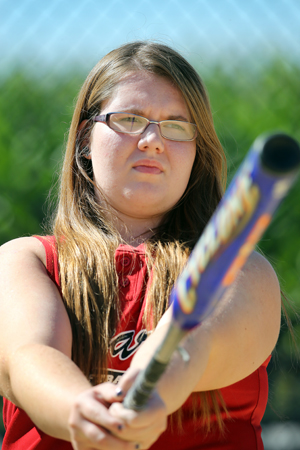 Fall sports mean thousands of Quad City athletes are on the football fields, soccer pitches, cross-country courses, and volleyball courts to represent their schools, win seasons, and for some, pursue dreams of coveted college scholarships. Unfortunately for many, sports careers and college dreams can be derailed by premature sports-related injuries. According to the Centers for Disease Control (CDC), high school athletes alone account for an estimated two million injuries, 500,000 physician visits, and 30,000 hospitalizations every year.
Fall sports mean thousands of Quad City athletes are on the football fields, soccer pitches, cross-country courses, and volleyball courts to represent their schools, win seasons, and for some, pursue dreams of coveted college scholarships. Unfortunately for many, sports careers and college dreams can be derailed by premature sports-related injuries. According to the Centers for Disease Control (CDC), high school athletes alone account for an estimated two million injuries, 500,000 physician visits, and 30,000 hospitalizations every year.
“We are definitely seeing younger and younger players with sports-related injuries come through our Sports Medicine Center,” says sports medicine surgeon, Dr. Suleman Hussain. “There are basically two types of injuries we see: overuse injuries caused by overtraining, and acute injuries caused by a sudden trauma, such as a twist, fall, or collision.”
Seventeen-year-old Emily Hayton, Wheatland, IA, has experienced her share of injuries, undergoing three separate surgeries in the span of one year. In November 2014, Emily tore the meniscus in her knee in PE — the injury occurred during her volleyball season. Sports medicine physician, Dr. Peter Rink, performed arthroscopic knee surgery to repair the tear. Four months later, Emily needed a second surgery, this time for her shoulder. “She was spiking the volleyball in a game when she felt a ‘pop,’” recalls her mother, Shannon Hayton. Shannon says her daughter had experienced occasional shoulder soreness from also playing softball. “She’s played softball for six years, and volleyball in high school. She’s really active, and enjoys playing for her teams.”
An MRI scan showed a tear to Emily’s labrum. The labrum is the tissue that surrounds the socket of the shoulder, and helps center and stabilize the ball inside the joint. In March, Dr. Hussain performed an arthroscopic repair of her labrum — a minimally invasive outpatient procedure. Subsequent physical therapy put Emily on the road to recovery. “Her shoulder actually felt much better than before the surgery,” says Shannon. However, her return-to-sport was short-lived, when a second meniscus tear occurred in the same knee after she fell and twisted it while roller-skating. Emily underwent her second knee surgery (her third surgery in a year) in mid-August. Dr. Rink performed the second surgery to the same knee. “It’s unfortunate, but Emily’s injuries have sidelined her for both her softball and volleyball seasons. Young athletes are particularly vulnerable to these injuries because they are still growing.”
According to the American Association of Orthopedic Surgeons (AAOS), a young person’s bones grow first, which pulls their muscles and tendons tight. This uneven growth pattern makes younger athletes more susceptible to muscle, tendon, and growth-plate injuries. How do parents know the difference between muscle soreness and injury? “Pain is a good indicator for potential problems,” says Dr. Hussain. “Young athletes should not play through pain.” In the event that some athletes may downplay their symptoms in order to continue playing, Dr. Hussain advises coaches and parents to be aware of the more common signs of injury, such as pain with activity, changes in form or technique, and pain at night, along with a decreased interest in practice.
“Kids are more active these days, and play year around. We definitely see more injuries. Every athlete needs to maintain a balanced program, even if they play a single sport,” says Dr. Hussain. He advises athletes and parents make sure young athletes cross train for balanced musculoskeletal health, and that they seek a physician’s advice if they have questions or concerns.
ORA Orthopedics offers a walk-in clinic for bone and joint injuries, including sports related injuries, at the only urgent care center in the Quad Cities that specializes in orthopedics. Urgent OrthoCARE provides fast attention from ORA’s expert orthopedic providers and sports medicine specialists, and because it’s ORA Orthopedics, patients have access to the most up-to-date technology, equipment, and treatments.
ORA has become the region’s leading orthopedic practice after more than 50 years of building on the expertise and the community commitment of its physicians. Located at 2300 53rd Avenue, #100, Bettendorf, IA. Walk-ins Clinic with no appointment need. For more information call (563) 322-0971 or log on to www.qcora.com For ORA events and patient success stories, follow us on Facebook.

